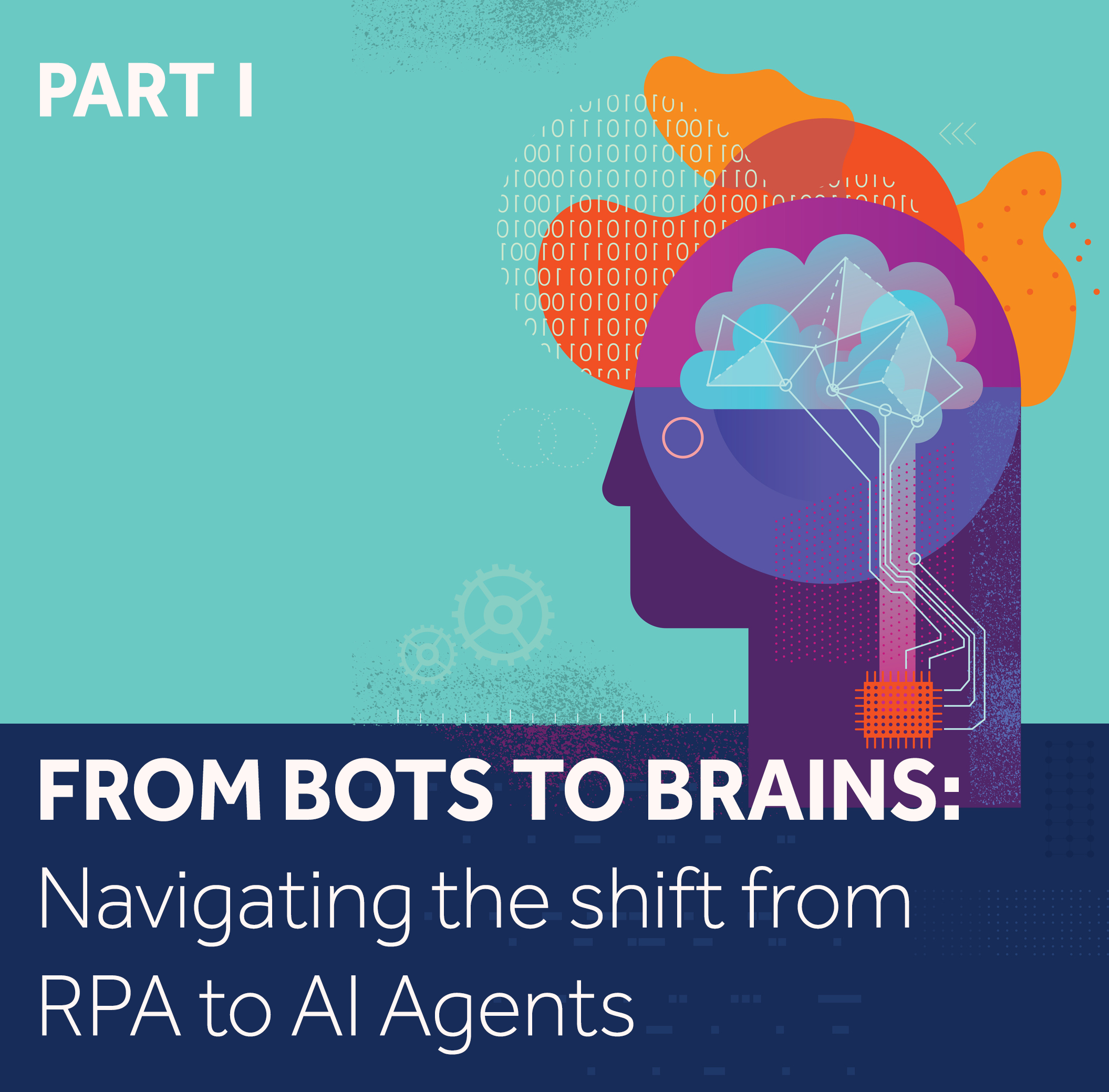Hyperautomation: The Next Stage of RPA Evolution
Innovation leaders are charged with ensuring that their organizations are at the cusp of technology trends. At the moment, that means that they have either implemented Robotic Process Automation (RPA) and are trying to scale, or they are aggressively investigating and planning for it. Like all technology, RPA continues to evolve at a rapid pace.
The next stage of the RPA evolution is what Gartner has coined hyperautomation and included in their list of the top 10 strategic trends for 2020.
The research argues that an investment in Robotic Process Automation leads to pressure from the business to focus on tactical needs, causing an implementation that revolves around quick wins; automating simple, repetitive processes to enable a non-invasive implementation. Not only can this type of approach not be implemented at scale, but the return of value is also marginal at best. Not all processes that a large enterprise executes are simple and stable; many are continuous, long-running, and require critical decisions and optimization.
In this blog, we present what hyperautomation is and how large organizations can implement it to scale their automation efforts across the enterprise successfully.
What is Hyperautomation?
Gartner defines hyperautomation as “an effective combination of complementary sets of tools that can integrate functional and process silos to automate and augment business processes.”
Essentially, the idea is to integrate a toolkit that enables organizations to automate as many business processes as possible. To effectively scale Robotic Process Automation beyond the simple processes, an ecosystem of tools is needed to discover, optimize, and then both automate and monitor the myriad of complex, long-running processes that can deliver real ROI.
For example, when automating the process for processing invoices, getting a bot to only extract the relevant information and input it into your defined system is an example of low-hanging fruit that masks real ROI. Why stop there? With a dedicated hyperautomation approach (a symbiosis of the right tools), the intent and objective are to automate the end-to-end multi-layered process of processing an invoice - instead of only a part of it – to serve as a true marker for success and deliver an impactful return of value.
The Importance of Creating a Hyperautomation Implementation Plan
The first step to a successful hyperautomation initiative is to define an automation implementation plan that consists of the following three pillars:
1. Define how automation contributes to business objectives
For CIOs (Chief Innovation Officers) to foster a culture of automation, they need executive support. Just like Robotic Process Automation, hyperautomation needs its business case and sponsor. In that regard, you need to define how automation contributes to your organization’s business objectives—whether it be increasing customer satisfaction, retention, driving revenue, or reinforcing regulatory compliance and decreasing risk.
2. Optimize your processes
A big reason 30-50% of RPA projects fail is because large organizations don’t take the opportunity to optimize their processes before automating them. We’ve previously presented this step as one of the fundamental steps in scaling any automation effort. To automate business processes end-to-end, all waste and inefficiencies must be removed so the processes can be standardized and primed for development and orchestration. In order to reap the benefits of hyperautomation—this means that you need to continuously act upon opportunities for business process optimization.
3. Define your toolkit
While there are a lot of options in the market with sophisticated and powerful platforms, an “RPA-ready” solution is not enough; the industry and current climate have shown as much. Automation investment and strategy requires much more tactical and high-level thinking, otherwise, innovation leaders are left spearheading automation efforts with siloed tools destined to fail. At a bird’s eye view, these are the fundamental areas of your hyperautomation toolkit that you need to consider:
- Process Discovery - Every large organization has numerous business processes that could be prime candidates for automation. Process discovery tools provide the technology to define, monitor, and record the steps of a business process, providing the footing for automation.
- Process Mining - Process mining tools are designed to extract processes, process steps, and basic knowledge from big data like event logs to present further automation options. This is ideal for mapping the business processes you didn’t even know existed that could be automated.
- Process Optimization - As previously mentioned, optimizing your business processes before automating them is essential for RPA at enterprise scale and hyperautomation. A tool is needed that empowers your citizen developers with a low-code/no-code solution to design and optimize processes before passing them on to engineers for development and deployment. We’ve found that a significant snag in scaling Robotic Process Automation has been the number of technical resources needed, so it’s important when considering a tool for process optimization, technology that can easily be leveraged by the average business persona be found.
- Robotic Process Automation Platform - A key to any RPA initiative is the platform responsible for deploying, orchestrating, and monitoring all the bots or automated processes deployed as your digital workforce. While the RPA provider you employ for hyperautomation is a fundamental element of your automation effort, your ability to scale and see a real return of investment is contingent on the necessary complementary tools you select to support your initiative.
How the Blueprint Enterprise Automation Suite is a perfect fit for hyperautomation
The Blueprint Enterprise Automation Suite is designed to empower all business stakeholders to design and optimize higher-level, complex business processes to drive RPA at scale. Specifically, the Blueprint Business Process Modeler delivers an intuitive and easy-to-use UI to design and optimize any business process and collaborate on it across your entire organization.
Every process can also be tied to the larger business context and any relevant regulatory constraints or enterprise standards to ensure regulatory compliance. It also provides automatic test case and gherkin file generation to give automation resources complete context and guidance when developing the bots to be deployed, removing the risk of errors or downstream rework.
All business processes optimized in the Process Modeler can then be directly fed into your RPA vendor – because Blueprint integrates with the market’s top RPA platforms - along with all the test cases, connected regulations, etc. that were defined for complete visibility and context.
To see how Blueprint can help you take automation to the next level and start optimizing your business processes, watch this short product video:
Share this
Recent Stories

Hyperautomation: What is it? And Why does it matter?

Unlocking Efficiency: Key Research Insights on RPA Bot Migration


